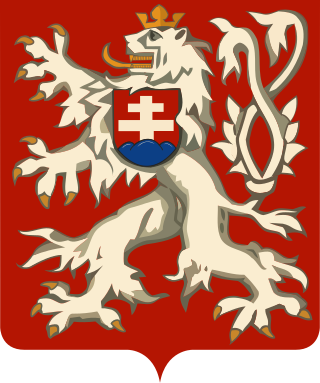
General elections were held in Romania on 26 November 2000, with a second round of the presidential election on 10 December. Former president Ion Iliescu of the Social Democracy Party of Romania (PDSR) was re-elected in the run-off, whilst the PDSR, as part of the Social Democratic Pole of Romania (PDSR), emerged as the largest party in Parliament, winning 155 of the 345 seats in the Chamber of Deputies and 65 of the 140 seats in the Senate. The 2000 Romanian presidential election was the fourth of its kind held in post-1989 Romania.
Parliamentary elections were held in Greece on 25 September 1932. All 250 seats in the Lower House of the Greek Parliament, the Chamber of Deputies, were elected, as well as one-third of the seats in the Senate. The outcome was an ambivalent result for the two biggest parties, the Liberal Party of Eleftherios Venizelos and the People's Party. The People's Party received a plurality of votes in the Chamber of Deputies elections, but won fewer seats than the Liberal Party. The Liberals also won the most seats in the Senate.

General elections were held in Romania in December 1937. The Chamber of Deputies was elected on 20 December, whilst the Senate was elected in three stages on 22, 28 and 30 December. Voting was by universal male suffrage, making them the last elections held before women could vote.

Parliamentary elections were held in Czechoslovakia on 15 November 1925. The result was a victory for the Republican Party of Farmers and Peasants, which won 45 seats in the Chamber of Deputies and 23 seats in the Senate. Voter turnout was 90.1% in the Chamber election and 77.3% for the Senate.
General elections were held in Romania between 4 and 8 November 1919. The Romanian National Party, which ran mostly unopposed in Transylvania, emerged as the largest party in Parliament, winning 169 of the 568 seats in the Chamber of Deputies and 76 of the 216 seats in the Senate. Though both the Socialist Party and People's League decided to boycott the elections, several of their candidates who had registered before the decision went on to win seats.
General elections were held in Romania between 25 and 27 May 1920. The result was a victory for the governing People's Party, which won 206 of the 366 seats in the Chamber of Deputies and 124 of the 166 seats in the Senate.
General elections were held in Romania between 1 and 3 March 1922. In the first stage between 1 and 3 March, seats in the Senate were elected. In the second stage between 5 and 7 March the Chamber of Deputies was elected, and in the third and final stage from 9 to 11 March, additional Senate seats were elected. The result was a victory for the governing National Liberal Party, which won 222 of the 372 seats in the Chamber of Deputies and 111 of the 148 seats in the Senate. Both houses were combined to form a Constitutional Assembly, which approved the 1923 constitution.

General elections were held in Romania in July 1927. The Chamber of Deputies was elected on 7 July, whilst the Senate was elected in three stages on 10, 12 and 14 July. The result was a victory for the governing National Liberal Party (PNL), which won 318 of the 387 seats in the Chamber of Deputies and 92 of the 110 seats in the Senate elected through universal male vote.
General elections were held in Romania in June 1931. The Chamber of Deputies was elected on 1 June, whilst the Senate was elected in three stages on 4, 6 and 8 June. The result was a victory for the governing National Union, an alliance of the National Party, the National Liberal Party, the German Party, the Agrarian Union Party, the Vlad Ţepeş League, the Agrarian League and several other parties. The Union won 289 of the 387 seats in the Chamber of Deputies and 108 of the 113 seats in the Senate elected through universal vote. The five seats won by the Communist-dominated Peasant Workers' Bloc were ultimately invalidated by the new Parliament.
General elections were held in Romania in July 1932. The Chamber of Deputies was elected on 17 July, whilst the Senate was elected in three stages on 20, 24 and 26 July. The result was a victory for the governing National Peasants' Party-German Party alliance, which won 274 of the 387 seats in the Chamber of Deputies and 104 of the 113 seats in the Senate elected through universal male vote. Of the 274 Chamber seats, 265 were taken by the National Peasant's Party and nine by the German Party.
General elections were held in Romania in December 1933, the third in three years. The Chamber of Deputies was elected on 20 December, whilst the Senate was elected in three stages on 22, 28 and 29 December.
General elections were held in Romania in June 1939. The Chamber of Deputies was elected on 1 June, and the Senate on the following day. They were the first elections since the introduction of the royal dictatorship of King Carol II under the 1938 constitution. Voters were presented with a single list from the National Renaissance Front, which had been the only legally permitted party in Romania since December.
The Progressive Conservative Party was a political party in Romania.
The Transylvanian Peasants' Party was a political party in Romania.
The Peasants' Party–Lupu was a political party in Romania.
The Democratic Peasants' Party–Stere was a political party in Romania.
The Agrarian Union Party was a political party in Romania.
The Hungarian People's Party was a political party in Romania.
The Radical Peasants' Party was a political party in Romania.

The Democratic Agrarian Party of Romania was a political party in Romania.





